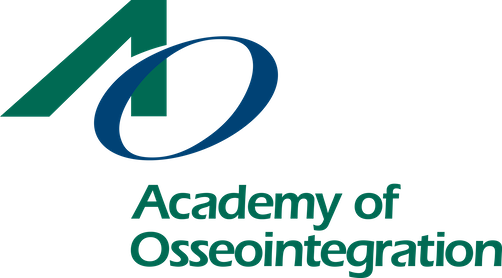-
 Dr. Paul Homoly, CSP Successful high-dollar case acceptance requires fresh thinking. Relying on worn-out case presentation techniques inconsistently provides the outcomes you hope for. Mastering High-Dollar Case Acceptance reveals the nuances among complex care patients that, when discovered and discussed, give patients the experience of being understood. For most patients, complex dentistry represents a significant lifestyle passage that dentists and teams must be aware of and acknowledge. For patients, complex dentistry is personal; they want it to be personal to us too. Upon completion of this presentation, participants should be able to: 1) Identify the behavioral distinctions between modest versus complex care patients. 2) Recognizing patients’ readiness for complex care. 3) Presenting complex care without overwhelming patients or losing them to sticker shock. Recorded – Apirl 17, 2024
Dr. Paul Homoly, CSP Successful high-dollar case acceptance requires fresh thinking. Relying on worn-out case presentation techniques inconsistently provides the outcomes you hope for. Mastering High-Dollar Case Acceptance reveals the nuances among complex care patients that, when discovered and discussed, give patients the experience of being understood. For most patients, complex dentistry represents a significant lifestyle passage that dentists and teams must be aware of and acknowledge. For patients, complex dentistry is personal; they want it to be personal to us too. Upon completion of this presentation, participants should be able to: 1) Identify the behavioral distinctions between modest versus complex care patients. 2) Recognizing patients’ readiness for complex care. 3) Presenting complex care without overwhelming patients or losing them to sticker shock. Recorded – Apirl 17, 2024 -
 Oliver Ristow, MD, DDS This course will cover the most recent changes in online marketing and provide the components needed to create a comprehensive marketing strategy for both existing practices or start-ups. You will learn the key items to implement, how they work, and how to measure success. In this session we will discuss changes in Google’s algorithm, website optimization, social media, accessibility, and ways you can optimize your website to generate new patients. Recorded - July 20, 2022
Oliver Ristow, MD, DDS This course will cover the most recent changes in online marketing and provide the components needed to create a comprehensive marketing strategy for both existing practices or start-ups. You will learn the key items to implement, how they work, and how to measure success. In this session we will discuss changes in Google’s algorithm, website optimization, social media, accessibility, and ways you can optimize your website to generate new patients. Recorded - July 20, 2022 -
 Hsun-Liang Chan, DDS, MS Using the surgical microscope as a routine in the clinic for performing periodontal and implant procedures is beneficial! Increased magnification (10 to 25x) and confocal illumination make possible precise incision, soft tissue reflection and management, complete surface detoxification and detailed suturing. These delicate procedures can lead to improved wound stability and early revascularization, which could improve regenerative outcomes and reduce postoperative morbidity, as shown in the literature. This webinar will focus on the principles and rationale of using the surgical microscope for bone regenerative procedures. New insights into soft tissue evaluation for wound opening risk assessment, incision designs and wound closure techniques for predictable bone regeneration will be discussed. Recorded - April 13, 2022
Hsun-Liang Chan, DDS, MS Using the surgical microscope as a routine in the clinic for performing periodontal and implant procedures is beneficial! Increased magnification (10 to 25x) and confocal illumination make possible precise incision, soft tissue reflection and management, complete surface detoxification and detailed suturing. These delicate procedures can lead to improved wound stability and early revascularization, which could improve regenerative outcomes and reduce postoperative morbidity, as shown in the literature. This webinar will focus on the principles and rationale of using the surgical microscope for bone regenerative procedures. New insights into soft tissue evaluation for wound opening risk assessment, incision designs and wound closure techniques for predictable bone regeneration will be discussed. Recorded - April 13, 2022 -
 Irene Marron-Tarrazzi, DMD, MS This webinar will discuss contemporary approaches for minimally invasive and predictable treatment of soft tissue deformities using microsurgical techniques in periodontal and implant surgery. Upon completion of this presentation, participants should be able to: 1) Explore different surgical techniques where periodontal microsurgical principles can be applied. 2) Describe what the adequate amount of soft tissue management and gingival volume required for peri-implant esthetics. 3) Explain the key factors for a successful outcome. Recorded - January 20, 2024
Irene Marron-Tarrazzi, DMD, MS This webinar will discuss contemporary approaches for minimally invasive and predictable treatment of soft tissue deformities using microsurgical techniques in periodontal and implant surgery. Upon completion of this presentation, participants should be able to: 1) Explore different surgical techniques where periodontal microsurgical principles can be applied. 2) Describe what the adequate amount of soft tissue management and gingival volume required for peri-implant esthetics. 3) Explain the key factors for a successful outcome. Recorded - January 20, 2024 -
 Recorded on May 21st, 2025 Description: Utilizing implant rehabilitation in treating patients with terminal dentition has been an optimal treatment modality in modern dental clinics with numerous scientific support. However, the most favorable survival/success outcome and longevity in such treatment remain challenging due to the complexity of which requiring intellectual knowledge and meticulous clinical execution. To begin with, the diagnosis, treatment plan, surgical intervention and fabrication of definitive prosthesis relies on comprehensive and fundamental prosthetic knowledge. Digital dental equipment, software and biomaterials were introduced in dentistry to reduce the pitfalls clinicians frequently encounter in the conventional world. Nevertheless, the integration of modern dental technologies providing top-quality end results of full mouth implant prosthesis will require understanding and in-depth knowledge for all perspectives. Upon completion of this presentation, participants should be able to: 1) Discuss interdisciplinary treatment planning workflow. 2) Navigate full digital implant protocols including the “NaviSmile Workflow”. 3) Explain the current limitations and latest invention of digital application for digital full arch definitive prosthesis. Selene Kuo, DDS, MS Dr. Selene (Hsin Yu) Kuo received her dual degrees in prosthodontics from Kaohsiung Medical University College of Dentistry (Taiwan) and Columbia University College of Dental Medicine (New York, USA). She then continued her academic appointment as clinical assistant professor in New York University College of Dentistry, Columbia University College of Dental Medicine, and Taipei Medical University College of Dentistry. With her profound prosthodontic-implant knowledge and clinical experience, her vision in digital implant dentistry drives her developed the innovative digital workflow “NaviSmile” featuring full mouth implant rehabilitation. “NaviSmile” workflow which incorporates the “era-breaking” dental navigation machine along with dental CAD/CAM equipment and software which precisely brings back patients’ health and smile. Dr. Kuo devotes herself in academia published numerous publications related to digital dentistry and has been lectured nationally/internationally. She also runs her private practice in Taipei City focusing on digital prosthodontics and dental implants. Dr. Kuo has stated she has no relevant financial conflicts to disclose. Relevant literature for further information: Martins J, Rangel J, de Araújo Nobre M, Ferro A, Nunes M, Almeida R, Moura Guedes C. A New Full Digital Workflow for Fixed Prosthetic Rehabilitation of Full-Arch Edentulism Using the All-on-4 Concept. Medicina (Kaunas). 2024 Apr 26;60(5):720. doi: 10.3390/medicina60050720. PMID: 38792903; PMCID: PMC11123051. Shuo Yao, Xiaojuan Yang, Xiaohui Han, Yanning Xue, Lingyun He, Dong Fang, LianPin Yu, Yali Hou, Shengyun Huang Immediate full-arch rehabilitation of edentulous jaws on 4 or 6 implants using a photogrammetry system: A retrospective study up to 2 years of follow-up, Journal of Stomatology, Oral and Maxillofacial Surgery, 2024, 102202, ISSN 2468-7855, https://doi.org/10.1016/j.jormas.2024.102202. (https://www.sciencedirect.com/science/article/pii/S2468785524004919) Serri, M., Ruggiero, G., Serri, M., Mastrosimone, A., Zarone, F., & Sorrentino, R. (2024). A fully-digital rehabilitation for immediately loaded fixed in-terim complete-arch prosthesis: A case report. Journal of Osseointegration, 16(3), 8–14. https://doi.org/10.23805/JO.2024.661
Recorded on May 21st, 2025 Description: Utilizing implant rehabilitation in treating patients with terminal dentition has been an optimal treatment modality in modern dental clinics with numerous scientific support. However, the most favorable survival/success outcome and longevity in such treatment remain challenging due to the complexity of which requiring intellectual knowledge and meticulous clinical execution. To begin with, the diagnosis, treatment plan, surgical intervention and fabrication of definitive prosthesis relies on comprehensive and fundamental prosthetic knowledge. Digital dental equipment, software and biomaterials were introduced in dentistry to reduce the pitfalls clinicians frequently encounter in the conventional world. Nevertheless, the integration of modern dental technologies providing top-quality end results of full mouth implant prosthesis will require understanding and in-depth knowledge for all perspectives. Upon completion of this presentation, participants should be able to: 1) Discuss interdisciplinary treatment planning workflow. 2) Navigate full digital implant protocols including the “NaviSmile Workflow”. 3) Explain the current limitations and latest invention of digital application for digital full arch definitive prosthesis. Selene Kuo, DDS, MS Dr. Selene (Hsin Yu) Kuo received her dual degrees in prosthodontics from Kaohsiung Medical University College of Dentistry (Taiwan) and Columbia University College of Dental Medicine (New York, USA). She then continued her academic appointment as clinical assistant professor in New York University College of Dentistry, Columbia University College of Dental Medicine, and Taipei Medical University College of Dentistry. With her profound prosthodontic-implant knowledge and clinical experience, her vision in digital implant dentistry drives her developed the innovative digital workflow “NaviSmile” featuring full mouth implant rehabilitation. “NaviSmile” workflow which incorporates the “era-breaking” dental navigation machine along with dental CAD/CAM equipment and software which precisely brings back patients’ health and smile. Dr. Kuo devotes herself in academia published numerous publications related to digital dentistry and has been lectured nationally/internationally. She also runs her private practice in Taipei City focusing on digital prosthodontics and dental implants. Dr. Kuo has stated she has no relevant financial conflicts to disclose. Relevant literature for further information: Martins J, Rangel J, de Araújo Nobre M, Ferro A, Nunes M, Almeida R, Moura Guedes C. A New Full Digital Workflow for Fixed Prosthetic Rehabilitation of Full-Arch Edentulism Using the All-on-4 Concept. Medicina (Kaunas). 2024 Apr 26;60(5):720. doi: 10.3390/medicina60050720. PMID: 38792903; PMCID: PMC11123051. Shuo Yao, Xiaojuan Yang, Xiaohui Han, Yanning Xue, Lingyun He, Dong Fang, LianPin Yu, Yali Hou, Shengyun Huang Immediate full-arch rehabilitation of edentulous jaws on 4 or 6 implants using a photogrammetry system: A retrospective study up to 2 years of follow-up, Journal of Stomatology, Oral and Maxillofacial Surgery, 2024, 102202, ISSN 2468-7855, https://doi.org/10.1016/j.jormas.2024.102202. (https://www.sciencedirect.com/science/article/pii/S2468785524004919) Serri, M., Ruggiero, G., Serri, M., Mastrosimone, A., Zarone, F., & Sorrentino, R. (2024). A fully-digital rehabilitation for immediately loaded fixed in-terim complete-arch prosthesis: A case report. Journal of Osseointegration, 16(3), 8–14. https://doi.org/10.23805/JO.2024.661 -
 Michael Miloro, DMD, MD Nerve injuries may occur following dental implant placement but there is no consensus on treatment protocols, and, unfortunately, patient morbidity may be significantly affect quality of life. Proper planning can mitigate the risk of nerve damage, but prompt diagnosis and management is required when nerve injury occurs. Both non-surgical and surgical options exist to treat these injuries, and current technological advances have allowed the use of a processed nerve allograft to repair the nerve with excellent outcomes. Recorded - June 30, 2022
Michael Miloro, DMD, MD Nerve injuries may occur following dental implant placement but there is no consensus on treatment protocols, and, unfortunately, patient morbidity may be significantly affect quality of life. Proper planning can mitigate the risk of nerve damage, but prompt diagnosis and management is required when nerve injury occurs. Both non-surgical and surgical options exist to treat these injuries, and current technological advances have allowed the use of a processed nerve allograft to repair the nerve with excellent outcomes. Recorded - June 30, 2022 -
 Shih-Cheng Wen, DDS, MS Dental implant surgery has become a modern science and adjusting the occlusion of the implant restoration is one of the important factors to avoid the complications of dental implants. This presentation will share some literature on the subject of dental implant occlusion. Recorded - October 14, 2021
Shih-Cheng Wen, DDS, MS Dental implant surgery has become a modern science and adjusting the occlusion of the implant restoration is one of the important factors to avoid the complications of dental implants. This presentation will share some literature on the subject of dental implant occlusion. Recorded - October 14, 2021 -
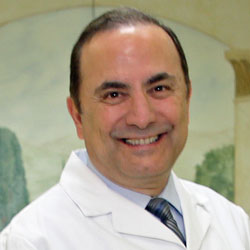 Tony Daher, DDS, MSEd The All-On-X prosthesis is a “popular” option for the treatment of completely edentulous arches with attractive esthetic and functional results. Attractive esthetic and functional results are the results of a well-fabricated presurgical “All-On-Non” Removable Complete Dentures. This concept uses X number of dental implants that are biomechanically positioned for maximum stability of the implant prosthesis. The All-On-X prosthesis concept continued, for many years now, to be a reliable and has a predictable high success rate. The final prosthesis can be made in various grades of laboratory materials from acrylic to metallo-ceramic to Zirconia, always with the same attention to esthetic and functional details. With the use of slides and videos, the presentation will cover many clinical tips needed for a predictable outcome using the All-On-X concept. Recorded - July 14, 2021
Tony Daher, DDS, MSEd The All-On-X prosthesis is a “popular” option for the treatment of completely edentulous arches with attractive esthetic and functional results. Attractive esthetic and functional results are the results of a well-fabricated presurgical “All-On-Non” Removable Complete Dentures. This concept uses X number of dental implants that are biomechanically positioned for maximum stability of the implant prosthesis. The All-On-X prosthesis concept continued, for many years now, to be a reliable and has a predictable high success rate. The final prosthesis can be made in various grades of laboratory materials from acrylic to metallo-ceramic to Zirconia, always with the same attention to esthetic and functional details. With the use of slides and videos, the presentation will cover many clinical tips needed for a predictable outcome using the All-On-X concept. Recorded - July 14, 2021 -
 Rand Harlow, DDS Maxillary anterior single tooth implant therapy can be challenging on multiple levels. Patients are becoming more demanding with their esthetic expectations. Achieving optimal esthetic outcomes requires an understanding of hard and soft tissue relationships, digital workflows and dental materials. This presentation will explore multiple considerations from diagnosis and treatment planning to treatment execution, in order to achieve acceptable esthetic results for maxillary implant surgery and restoration. Recorded - September 15, 2022
Rand Harlow, DDS Maxillary anterior single tooth implant therapy can be challenging on multiple levels. Patients are becoming more demanding with their esthetic expectations. Achieving optimal esthetic outcomes requires an understanding of hard and soft tissue relationships, digital workflows and dental materials. This presentation will explore multiple considerations from diagnosis and treatment planning to treatment execution, in order to achieve acceptable esthetic results for maxillary implant surgery and restoration. Recorded - September 15, 2022 -
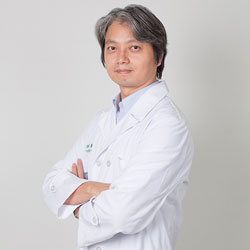 Reis Cheng-Hsiang Hsu, BDS, MS “PASS” principle (Primary wound closure, angiogenesis, space and stability) is the foundation for achieving predictable bone augmentation. This lecture will cover every aspect of this principle so the participants can predictably achieve the bone augmentation that is needed for proper implant placement and implant stability. The lecture will focus on the detail technique of extreme flap advancement, graft mobilization and the skill of flap closure that can be applied even in the vertical bone augmentation. Recorded - July 14, 2022
Reis Cheng-Hsiang Hsu, BDS, MS “PASS” principle (Primary wound closure, angiogenesis, space and stability) is the foundation for achieving predictable bone augmentation. This lecture will cover every aspect of this principle so the participants can predictably achieve the bone augmentation that is needed for proper implant placement and implant stability. The lecture will focus on the detail technique of extreme flap advancement, graft mobilization and the skill of flap closure that can be applied even in the vertical bone augmentation. Recorded - July 14, 2022 -
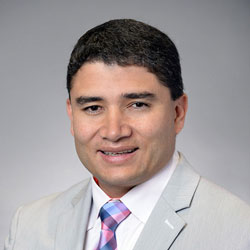 Emilio Arguello, DDS, MS This lecture will focus on the different models for successful management and integration of work-flows between a private practice versus a multi practice models. As well as the understanding of the common goals to maximize earning potential that can be achieved in both models from the practitioner’s point of view. Recorded - November 3, 2021
Emilio Arguello, DDS, MS This lecture will focus on the different models for successful management and integration of work-flows between a private practice versus a multi practice models. As well as the understanding of the common goals to maximize earning potential that can be achieved in both models from the practitioner’s point of view. Recorded - November 3, 2021 -
 Alpdogan Kantarci, DDS, MS, PhD Peri-implant diseases present a major challenge in dental practice. Treatment options for advanced diseases around dental implants are limited. While there are several similarities between periodontal and peri-implant diseases in their pathogenesis and microbial etiologies, periodontal treatment strategies are not readily applicable to the treatment of peri-implant mucositis and peri-implantitis. One of the key differences is the characteristics of the implant surfaces. In this presentation, emerging preventive and therapeutic approaches will be discussed with an emphasis on geriatric patient population. Recorded - April 21, 2021
Alpdogan Kantarci, DDS, MS, PhD Peri-implant diseases present a major challenge in dental practice. Treatment options for advanced diseases around dental implants are limited. While there are several similarities between periodontal and peri-implant diseases in their pathogenesis and microbial etiologies, periodontal treatment strategies are not readily applicable to the treatment of peri-implant mucositis and peri-implantitis. One of the key differences is the characteristics of the implant surfaces. In this presentation, emerging preventive and therapeutic approaches will be discussed with an emphasis on geriatric patient population. Recorded - April 21, 2021 -
 Martina Stefanini, DDS, PhD The recession of the buccal soft tissue margin is a frequent complication of well integrated dental implants. The appearance of metallic structure or even their transparency through the thin buccal soft tissues are common reasons for patient aesthetic complains. Moreover, bad implant installation frequently results in excessive apical dislocation of the buccal soft tissue margin of the implant supported crown. Soft tissue plastic surgical procedures and bilaminar techniques in particular, can be successfully used in combination with a pre and postsurgical prostethic approaches to increase the volume of the interdental soft tissue, to treat buccal gingival recessions and soft tissue dehiscence around dental implants and to provide the new implant supported crown with an esthetic transmucosal emergency profile. Recorded - May 4, 2021
Martina Stefanini, DDS, PhD The recession of the buccal soft tissue margin is a frequent complication of well integrated dental implants. The appearance of metallic structure or even their transparency through the thin buccal soft tissues are common reasons for patient aesthetic complains. Moreover, bad implant installation frequently results in excessive apical dislocation of the buccal soft tissue margin of the implant supported crown. Soft tissue plastic surgical procedures and bilaminar techniques in particular, can be successfully used in combination with a pre and postsurgical prostethic approaches to increase the volume of the interdental soft tissue, to treat buccal gingival recessions and soft tissue dehiscence around dental implants and to provide the new implant supported crown with an esthetic transmucosal emergency profile. Recorded - May 4, 2021 -
 Mario Beretta, DDS, MSc, PhD The goal of modern implant therapy in aesthetic areas is no longer represented just by the successful integration of the implant or tooth restoration. The final result must be a restoration surrounded by a soft and hard tissue environment in harmony with the existing teeth. Gingival health is among the first fundamental esthetic objectives during treatment planning; it is also essential to consider gingival morphology and contour. The ideal gingival architecture has been described as one that consists of knife-edged gingival margins tightly adapted to the teeth, interdental grooves, and cone-shaped inter- dental papilla. Soft tissue grafting procedures are increasingly performed for a number of indications in conjunction with dental implant therapy. The presentation will identify the role of gingival form in esthetic dentistry. A new volume stable collagen matrix will be presented analyzing research data and clinical indications. The surgical protocol in peri-implant soft tissues management and periodontal plastic surgery will be presented. Upon completion of this presentation, participants should be able to: 1) Identify methods of treatment planning for soft tissues management. 2) Describe proper surgical technique in peri-implant soft tissues management. 3) Recognize the best surgical technique for soft tissues harvesting. Recorded on February 18th, 2025
Mario Beretta, DDS, MSc, PhD The goal of modern implant therapy in aesthetic areas is no longer represented just by the successful integration of the implant or tooth restoration. The final result must be a restoration surrounded by a soft and hard tissue environment in harmony with the existing teeth. Gingival health is among the first fundamental esthetic objectives during treatment planning; it is also essential to consider gingival morphology and contour. The ideal gingival architecture has been described as one that consists of knife-edged gingival margins tightly adapted to the teeth, interdental grooves, and cone-shaped inter- dental papilla. Soft tissue grafting procedures are increasingly performed for a number of indications in conjunction with dental implant therapy. The presentation will identify the role of gingival form in esthetic dentistry. A new volume stable collagen matrix will be presented analyzing research data and clinical indications. The surgical protocol in peri-implant soft tissues management and periodontal plastic surgery will be presented. Upon completion of this presentation, participants should be able to: 1) Identify methods of treatment planning for soft tissues management. 2) Describe proper surgical technique in peri-implant soft tissues management. 3) Recognize the best surgical technique for soft tissues harvesting. Recorded on February 18th, 2025 -
 Georgios Kotsakis, DDS, MS Peri-implantitis has been receiving attention following recent studies that showed that it is highly prevalent and difficult to manage. This lecture will provide the latest evidence-based information on peri-implant diseases with emphasis on the role that titanium particle release has in destructive bone inflammation around implants. Strategies for prevention and mitigation will be presented through clinical cases. Upon completion of this presentation, participants should be able to: 1) Identify explicit methods of peri-implant evaluation. 2) Explain the role of titanium particles around implants. 3) Discuss the etiology of peri-implantitis. Recorded on April 10th, 2025
Georgios Kotsakis, DDS, MS Peri-implantitis has been receiving attention following recent studies that showed that it is highly prevalent and difficult to manage. This lecture will provide the latest evidence-based information on peri-implant diseases with emphasis on the role that titanium particle release has in destructive bone inflammation around implants. Strategies for prevention and mitigation will be presented through clinical cases. Upon completion of this presentation, participants should be able to: 1) Identify explicit methods of peri-implant evaluation. 2) Explain the role of titanium particles around implants. 3) Discuss the etiology of peri-implantitis. Recorded on April 10th, 2025 -
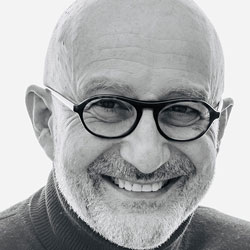 Philippe Khayat, MSD Peri-implantitis is a puzzling and frustrating complication. Sadly, it is becoming more and more frequent. Several senior dental professionals tell us that, for a long time (1985-2005), peri-implantitis was almost absent from their experience. They mention the shift from machined to modified implant surfaces as a possible explanation. In other terms, could moderately rough implant surfaces be a risk factor? The debate is very active and scientific studies do not lead to the same conclusions. We will explore this controversy both from a scientific and clinical perspective and evaluate the need for hybrid implants. Recorded - March 17, 2022
Philippe Khayat, MSD Peri-implantitis is a puzzling and frustrating complication. Sadly, it is becoming more and more frequent. Several senior dental professionals tell us that, for a long time (1985-2005), peri-implantitis was almost absent from their experience. They mention the shift from machined to modified implant surfaces as a possible explanation. In other terms, could moderately rough implant surfaces be a risk factor? The debate is very active and scientific studies do not lead to the same conclusions. We will explore this controversy both from a scientific and clinical perspective and evaluate the need for hybrid implants. Recorded - March 17, 2022 -
 Setareh Lavasani, DDS, MS This presentation is an interactive and comprehensive update in 2D and 3D CBCT radiographic interpretation. It focuses on the importance of developing an analytical strategy to systematically review different types of dental images. The importance of “pattern recognition” to differentiate between different jaw pathologies; inflammatory, benign, malignant and fibrou-osseous lesions with clinical cases will be discussed. An overview of possible differential diagnosis for paranasal sinuses opacifications and head and neck soft tissue calcifications are reviewed. Recorded - August 19, 2021
Setareh Lavasani, DDS, MS This presentation is an interactive and comprehensive update in 2D and 3D CBCT radiographic interpretation. It focuses on the importance of developing an analytical strategy to systematically review different types of dental images. The importance of “pattern recognition” to differentiate between different jaw pathologies; inflammatory, benign, malignant and fibrou-osseous lesions with clinical cases will be discussed. An overview of possible differential diagnosis for paranasal sinuses opacifications and head and neck soft tissue calcifications are reviewed. Recorded - August 19, 2021 -
 Prof. Dr. Tobias Fretwurst What if our therapies were as precise as Netflix recommendations? What sounds like the future is becoming increasingly commonplace in many areas of medicine. In this talk, Dr. Fretwurst will explain in simple terms what is meant by precision medicine and discuss its immense potential. Then he will showcase how his work group is already making use of this so-called personalized medicine in the field of implant dentistry. How can precision medicine be applied, for example, in grafting surgery? Can it revolutionize peri-implantitis diagnosis? What are the current limitations? Recorded - July 12, 2023
Prof. Dr. Tobias Fretwurst What if our therapies were as precise as Netflix recommendations? What sounds like the future is becoming increasingly commonplace in many areas of medicine. In this talk, Dr. Fretwurst will explain in simple terms what is meant by precision medicine and discuss its immense potential. Then he will showcase how his work group is already making use of this so-called personalized medicine in the field of implant dentistry. How can precision medicine be applied, for example, in grafting surgery? Can it revolutionize peri-implantitis diagnosis? What are the current limitations? Recorded - July 12, 2023 -
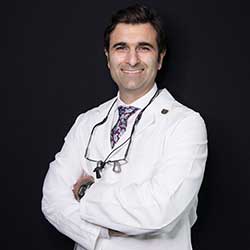 Sam Shamardi, DMD This course will provide an overview of several essential factors that a dental professional needs to succeed as an individual and practice owner from graduation day to retirement. Upon completion of this presentation, participants should be able to: 1) Identify best options for student loan repayment. 2) Explain why saving from day one is essential. 3) Describe important lifestyle and work habits that need to be considered for long term success. Recorded – March 26, 2024
Sam Shamardi, DMD This course will provide an overview of several essential factors that a dental professional needs to succeed as an individual and practice owner from graduation day to retirement. Upon completion of this presentation, participants should be able to: 1) Identify best options for student loan repayment. 2) Explain why saving from day one is essential. 3) Describe important lifestyle and work habits that need to be considered for long term success. Recorded – March 26, 2024 -
 Junying Li, DDS, MS, PhD Prosthetic design is a crucial factor influencing the long-term success of implant treatments. This lecture will explore essential prosthetic considerations, with a focus on trans-mucosal contour design and its relationship to surgical techniques, abutment selection, and the restoration process. A clinical decision tree and cases utilizing a fully digital approach will be demonstrated. Upon completion of this presentation, participants should be able to: 1) Identify the types of single implant abutment. 2) Design an implant crown contour that is both biologically sound and aesthetically correct. 3) Describe the process of immediate single implant loading with digitally pre-fabricated implant crown. Recorded September 18th
Junying Li, DDS, MS, PhD Prosthetic design is a crucial factor influencing the long-term success of implant treatments. This lecture will explore essential prosthetic considerations, with a focus on trans-mucosal contour design and its relationship to surgical techniques, abutment selection, and the restoration process. A clinical decision tree and cases utilizing a fully digital approach will be demonstrated. Upon completion of this presentation, participants should be able to: 1) Identify the types of single implant abutment. 2) Design an implant crown contour that is both biologically sound and aesthetically correct. 3) Describe the process of immediate single implant loading with digitally pre-fabricated implant crown. Recorded September 18th

